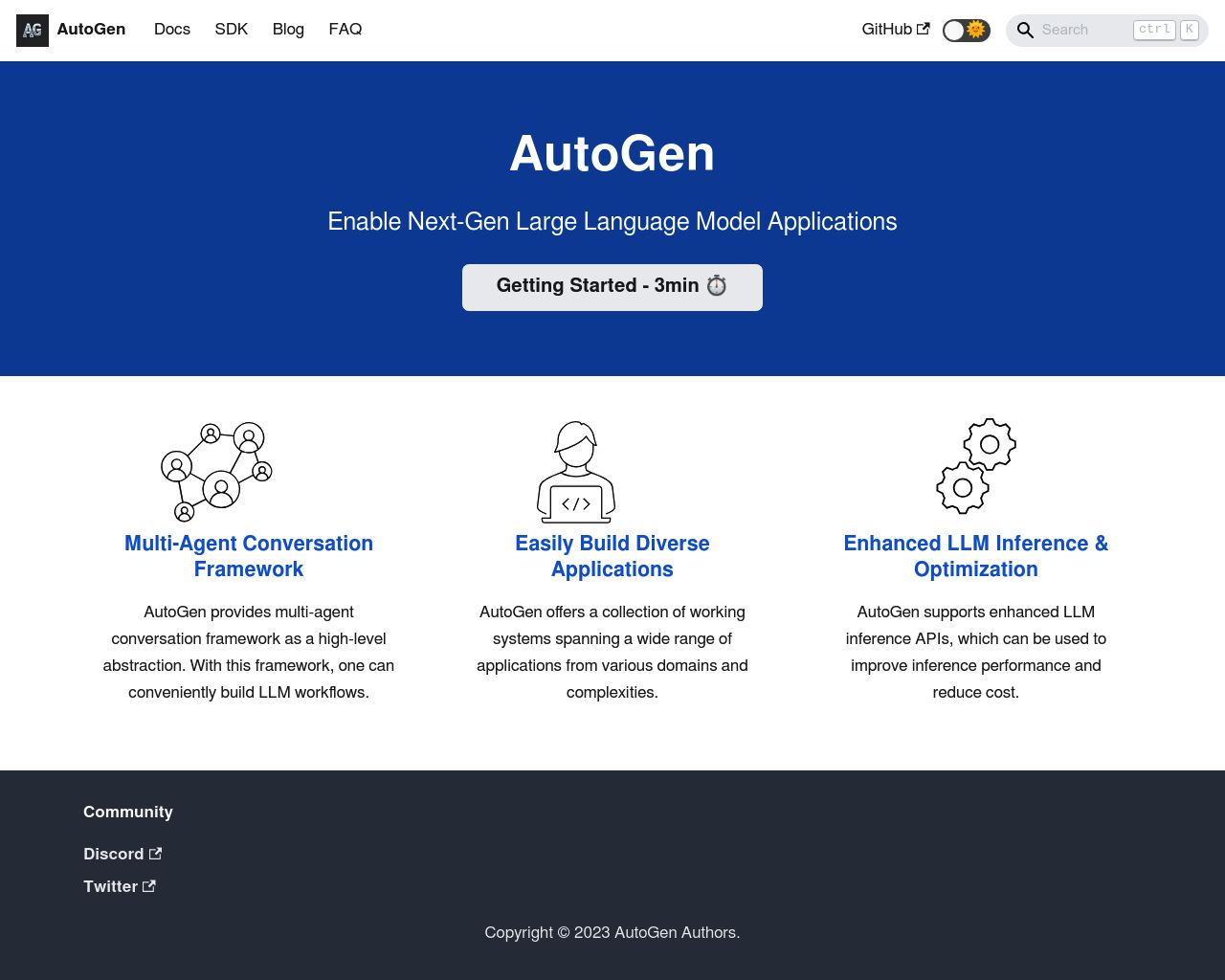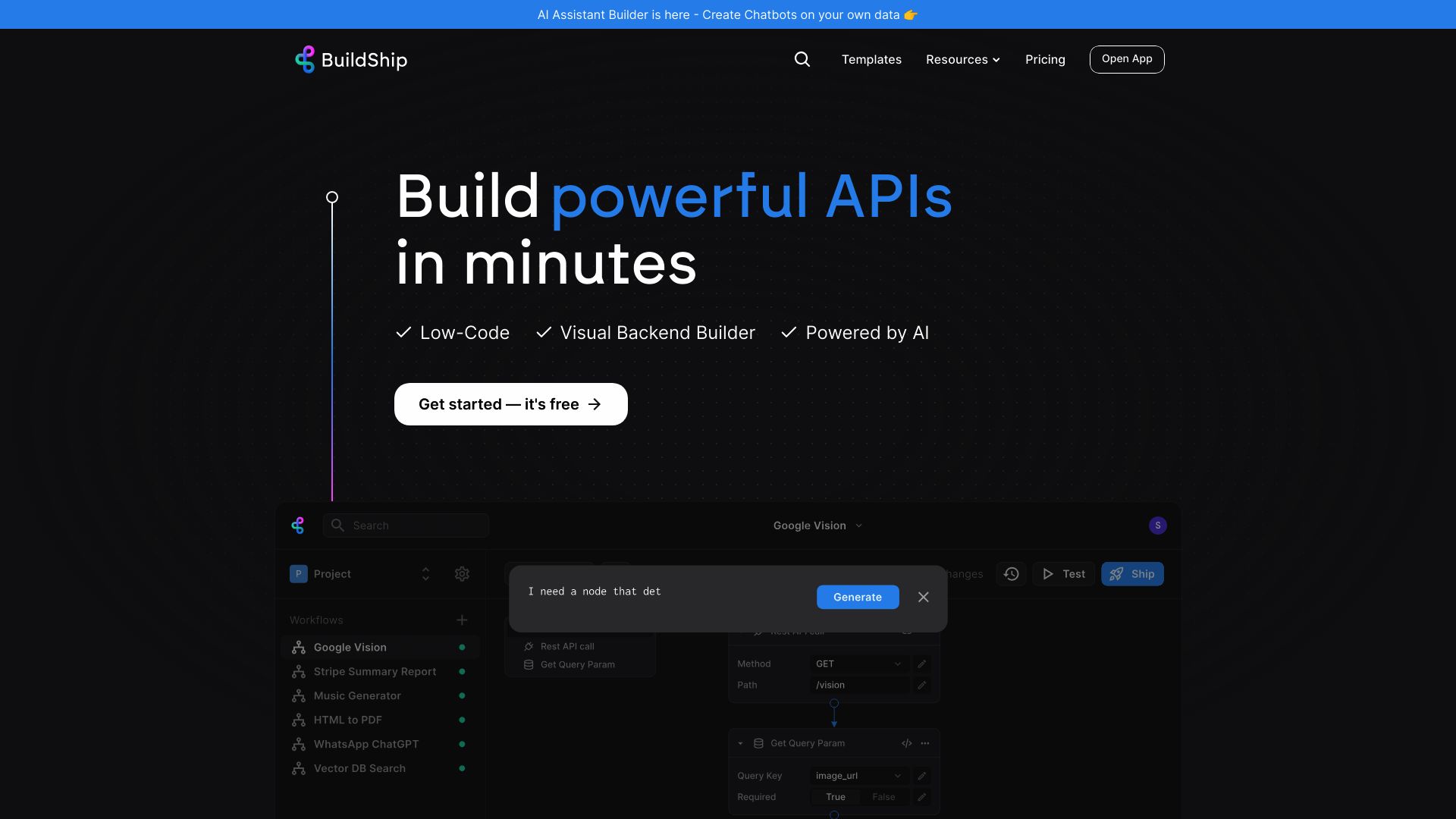AutoGen vs. BuildShip: Features and Deployment Compared
Artificial intelligence tools reshape business processes daily, empowering organizations to automate tasks, generate insights, and enhance decision-making. This comparison examines three powerful AI development platforms: AutoGen, BuildShip, and SmythOS. AutoGen excels in multi-agent conversations and LLM optimization, while BuildShip offers a visual no-code approach to backend automation. SmythOS emerges as a comprehensive solution, combining advanced AI capabilities with user-friendly tools. We explore each platform’s strengths, limitations, and ideal use cases to help developers, business leaders, and AI enthusiasts select the right tool for their needs. Whether you seek sophisticated agent interactions, rapid workflow creation, or a versatile AI ecosystem, this analysis provides the insights to guide your decision.
AutoGen Overview
AutoGen empowers developers to create sophisticated AI applications through multi-agent conversations. This open-source framework enables customizable agents to interact with each other, Large Language Models (LLMs), tools, and humans to tackle complex tasks.


AutoGen maximizes LLM performance with enhanced inference capabilities, including tuning, caching, error handling, and templating. These features optimize the utility of resource-intensive models like GPT-4. The framework supports both fully autonomous operations and human-in-the-loop problem-solving, adapting to scenarios where human input is crucial.
AutoGen empowers developers to create sophisticated AI applications through multi-agent conversations.
Developers can tailor agents to specific task requirements, integrating LLMs, human inputs, and various tools. AutoGen demonstrates effectiveness across diverse applications, from automated task solving and code generation to continual learning and complex problem-solving in group chats.
The platform includes debugging tools and logging functionalities for API calls, essential for diagnosing and optimizing LLM-based systems. AutoGen also features EcoOptiGen, a cost-effective technique for tuning large language models, emphasizing efficiency in LLM utilization.
While AutoGen offers powerful capabilities for AI development, it requires coding expertise to set up agents and workflows. The lack of a visual builder or no-code editor may present a barrier for non-technical users seeking to create AI solutions. Additionally, the framework’s focus on code-based configuration might limit its accessibility for those preferring graphical interfaces for agent creation and management.
BuildShip Overview
BuildShip empowers users to create backend workflows and APIs without extensive coding. The platform’s visual no-code interface allows rapid development of complex automations, integrating various data sources and AI models.


BuildShip’s drag-and-drop workflow builder features prebuilt nodes and AI-generated custom nodes, accelerating development for both technical and non-technical users. The platform supports writing custom logic in JavaScript/TypeScript, providing flexibility for more advanced users.
BuildShip’s drag-and-drop workflow builder features prebuilt nodes and AI-generated custom nodes, accelerating development for both technical and non-technical users.
Key features include comprehensive testing capabilities for individual nodes and entire workflows, allowing iterative development and refinement. Users can deploy their creations as production-grade APIs, integrate them into applications, or schedule automatic execution. BuildShip also leverages AI to autofill inputs using natural language prompts, further streamlining the development process.
While BuildShip offers powerful tools for backend automation, it lacks some advanced features found in other platforms. The absence of a dedicated agent work scheduler or specialized crawlers for sitemaps and YouTube transcripts may limit its applicability in certain scenarios. Additionally, the platform does not appear to offer extensive support for multimodal AI interactions or advanced features like hosted vector databases.
BuildShip positions itself as a solution for rapid workflow and API development, aiming to increase productivity tenfold. Its focus on visual development and AI-assisted features makes it particularly appealing to users seeking to quickly prototype and deploy backend solutions without deep technical expertise.
Feature Comparison
AutoGen and BuildShip offer distinct approaches to AI agent development and workflow automation. AutoGen focuses on multi-agent conversations and enhanced Large Language Model inference, while BuildShip provides a visual no-code platform for backend workflow creation.
AutoGen excels in customizable agent interactions, supporting autonomous operations and human-in-the-loop problem-solving. Its framework maximizes LLM performance through advanced tuning and error handling. However, AutoGen lacks a visual builder or no-code editor, requiring coding expertise for setup and configuration.
BuildShip emphasizes rapid development through its drag-and-drop interface and AI-generated custom nodes. It supports writing custom logic in JavaScript/TypeScript and offers comprehensive testing capabilities. BuildShip’s strength lies in its accessibility for non-technical users and quick deployment options. However, it lacks advanced features like agent work scheduling and specialized crawlers for sitemaps or YouTube transcripts.
In terms of security, both platforms have limitations. AutoGen does not explicitly mention data encryption or IP control features, while BuildShip’s documentation lacks details on these aspects. Neither platform appears to offer constrained alignment capabilities, potentially limiting their use in highly regulated environments.
Feature Comparison Table
| AutoGen | BuildShip | SmythOS | |
|---|---|---|---|
| CORE FEATURES | |||
| Visual Builder | ❌ | ✅ | ✅ |
| No-Code Options | ❌ | ✅ | ✅ |
| Memory & Context | ✅ | ❌ | ✅ |
| Autonomous Agents | ✅ | ❌ | ✅ |
| Explainability & Transparency | ✅ | ❌ | ✅ |
| Multimodal | ✅ | ❌ | ✅ |
| Problem-Solving Capabilities | ✅ | ❌ | ✅ |
| Multi-Agent Collaboration | ✅ | ❌ | ✅ |
| Human-AI Interaction | ✅ | ❌ | ✅ |
| Audit Logs for Analytics | ✅ | ❌ | ✅ |
| Work as Team | ✅ | ❌ | ✅ |
| Agent Work Scheduler | ❌ | ✅ | ✅ |
| SECURITY | |||
| Constrained Alignment | ❌ | ❌ | ✅ |
| IP Control | ❌ | ✅ | ✅ |
| COMPONENTS | |||
| Foundation AIs | ✅ | ❌ | ✅ |
| Huggingface AIs | ✅ | ❌ | ✅ |
| Zapier APIs | ✅ | ❌ | ✅ |
| Classifiers | ✅ | ❌ | ✅ |
| Data Lakes | ❌ | ❌ | ✅ |
| DEPLOYMENT OPTIONS (EMBODIMENTS) | |||
| Staging Domains | ❌ | ❌ | ✅ |
| Production Domains | ❌ | ❌ | ✅ |
| Deploy as Site Chat | ✅ | ❌ | ✅ |
| Deploy as Scheduled Agent | ❌ | ✅ | ✅ |
| Deploy as GPT | ✅ | ❌ | ✅ |
| DATA LAKE SUPPORT | |||
| Hosted Vector Database | ❌ | ❌ | ✅ |
| Sitemap Crawler | ❌ | ❌ | ✅ |
| YouTube Transcript Crawler | ❌ | ❌ | ✅ |
| URL Crawler | ✅ | ❌ | ✅ |
| PDF Support | ✅ | ❌ | ✅ |
| Word File Support | ✅ | ❌ | ✅ |
| TXT File Support | ✅ | ❌ | ✅ |
Conclusion
AutoGen, BuildShip, and SmythOS each offer unique approaches to AI agent development and workflow automation. AutoGen excels in multi-agent conversations and enhanced Large Language Model inference, while BuildShip provides a visual no-code platform for backend workflow creation. However, SmythOS stands out as the superior choice, combining the strengths of both platforms and addressing their limitations.
SmythOS offers a comprehensive suite of features, including a visual builder, no-code editor, and support for multimodal AI interactions. Unlike AutoGen, which requires coding expertise, SmythOS democratizes AI development with its intuitive drag-and-drop interface. It surpasses BuildShip’s capabilities by providing advanced features like agent work scheduling, specialized crawlers, and a hosted vector database.
With its extensive integration ecosystem of over 300,000 APIs and tools, SmythOS enables users to create sophisticated AI workflows that can be deployed across various platforms. This ’Create Once, Deploy Anywhere’ approach, coupled with robust security features and scalability, makes SmythOS an ideal choice for businesses of all sizes seeking to leverage AI technology.
To experience the power of SmythOS and revolutionize your AI development process, create a free SmythOS account today. You can start building AI agents at no cost, with no time limit, and explore our diverse range of AI-powered agent templates to jumpstart your projects. For those ready to take their AI capabilities to the next level, discover our seamless integrations and versatile deployment options. SmythOS is your gateway to unlocking the full potential of AI in your business operations.
Last updated:
Disclaimer: The information presented in this article is for general informational purposes only and is provided as is. While we strive to keep the content up-to-date and accurate, we make no representations or warranties of any kind, express or implied, about the completeness, accuracy, reliability, suitability, or availability of the information contained in this article.
Any reliance you place on such information is strictly at your own risk. We reserve the right to make additions, deletions, or modifications to the contents of this article at any time without prior notice.
In no event will we be liable for any loss or damage including without limitation, indirect or consequential loss or damage, or any loss or damage whatsoever arising from loss of data, profits, or any other loss not specified herein arising out of, or in connection with, the use of this article.
Despite our best efforts, this article may contain oversights, errors, or omissions. If you notice any inaccuracies or have concerns about the content, please report them through our content feedback form. Your input helps us maintain the quality and reliability of our information.
